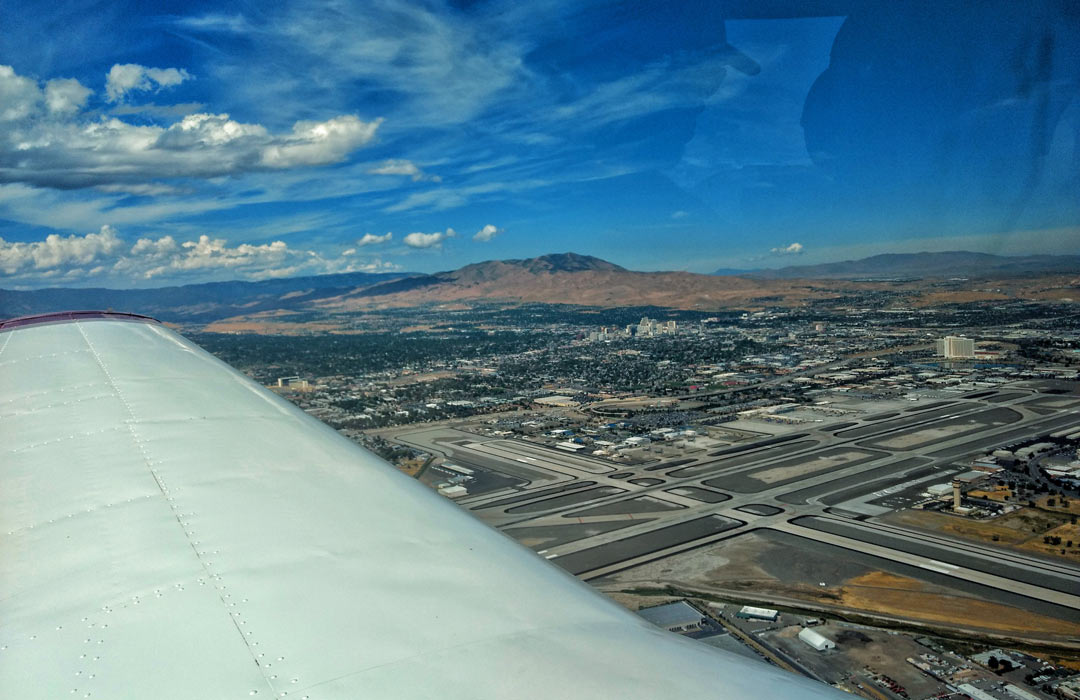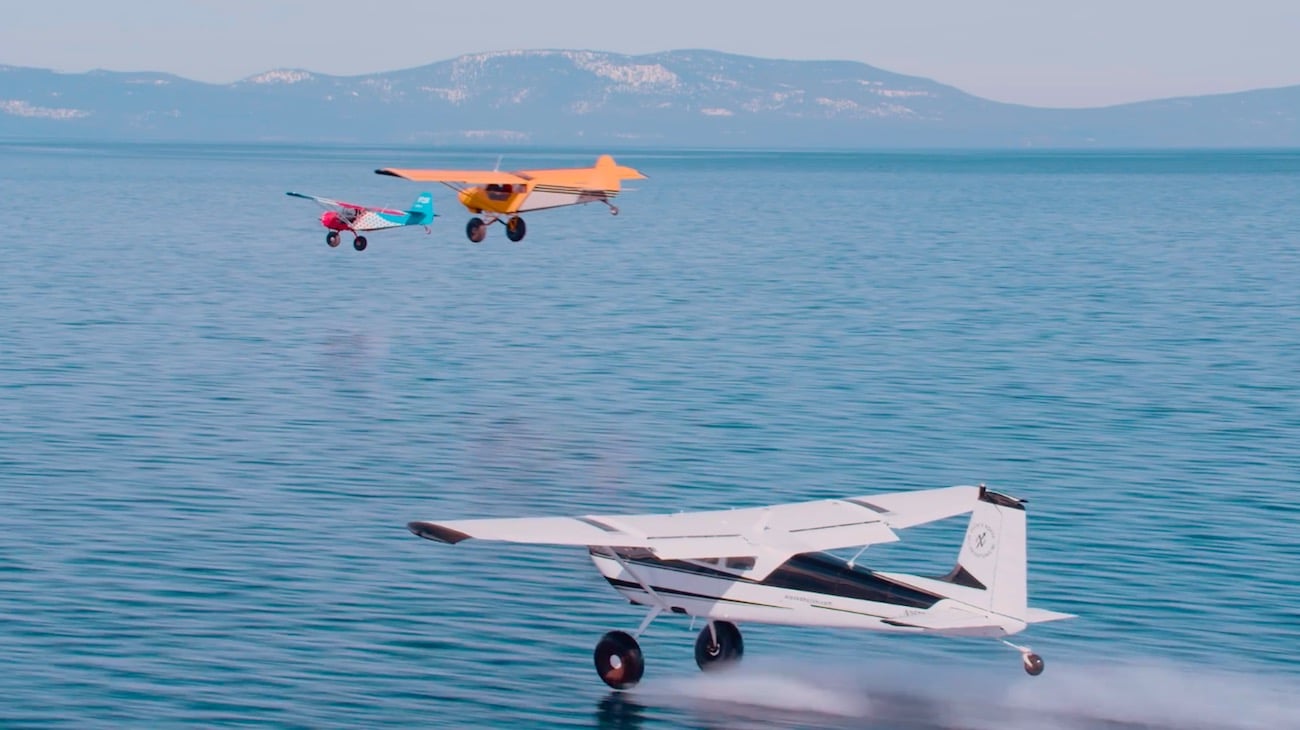The general aviation fleet will increase in size, though the total number of general aviation piston engine aircraft is expected to decline.
The FAA has just released its annual Aerospace Forecast Report Fiscal Years 2017 to 2037, which offers a current and projected look at items such as air cargo, US Airline traffic and capacity, FAA workload, general aviation activity and pilots, and the UAS (Unmanned Aircraft Systems) fleet and pilots. And for the most part, the agency’s findings show sustained and continued growth across the industry.
According to the agency, the forecast is considered the industry standard for US aviation related activities, and is developed using a variety of economic data and projections, “such as generally accepted projections for the nation’s Gross Domestic Product (GDP).”
2016 US Commercial Aviation Activity Report and Forecast
General Summary of 2016
In 2016, US commercial air carriers (which includes passenger and cargo activity) reported an operating profit of $29.6 billion, compared to an operating profit of $26.7 billion in 2015. During 2016, operating revenue decreased by 0.1%, while operating expenses decreased 1.7%.
Enplanements in 2016
- Domestic enplanements for mainline and regional air carriers combined increased from 696.3 million in 2015 to 726.2 million in 2016, roughly a 4.3% increase.
- Domestic enplanements for mainline carriers increased 5.8%.
- Domestic enplanements for regional carriers decreased 0.9%.
- International enplanements for mainline and regional air carriers combined increased from 90.2 million in 2015 to 93.4 million in 2016, roughly a 3.6% increase.
- International enplanements for mainline carriers increased 3.1%.
- International enplanements for regional carriers increased 16%.
Revenue Passenger Miles in 2016
According to the FAA, in terms of commercial air travel, the RPM or revenue passenger mile (one revenue passenger traveling one mile) is considered the benchmark for measuring aviation growth.
- Domestic RPMs by mainline and regional air carriers combined increased from 628.5 billion in 2015 to 663.2 billion in 2016, a roughly 5.5% increase.
- Domestic mainline carrier RPMs increased 6.1%.
- Domestic regional carrier RPMs increased 0.3%.
- International RPMs by mainline and regional air carriers combined increased from 261 billion in 2015 to 264.8 billion in 2016, a roughly 1.5% increase.
- Total system RPMs increased from 889.5 billion in 2015 to 928 billion in 2016, a roughly 4.3% increase.
- Total mainline carrier RPMs increased 4.6%.
- Total regional carrier RPMs increased by 0.9%.
Fleet Size Forecast
US mainline air carriers will see their passenger jet fleet increase from 4,068 aircraft in 2016 to 5,199 aircraft by 2037, with an average annual increase of 1.2%. However, the fleet is projected to decrease by 62 aircraft (1.5%) in 2017, due to a decrease in the narrow body fleet. The regional carrier passenger aircraft fleet will decrease from 2,156 aircraft in 2016 to 2,027 aircraft in 2037, an average annual decrease of 0.3%. The regional fleet is projected to shrink 5.1% in 2017, losing 111 aircraft.
Enplanements Forecast
- The combined total mainline and regional carrier enplanements are forecast to increase from 819.6 million in 2016 to 1.23 billion by 2037, with an average annual growth rate of 1.9 percent.
- Domestic enplanements are projected to increase 2.2% for 2017, and then continue growing an average of 1.7% per year for the remaining 20-year period of the forecast.
- US Mainline carrier domestic enplanements are forecast to increase 2.6% in 2017, and grow an average annual rate of 1.7% until 2037.
- Regional carrier domestic enplanements are forecast to increase 0.6% in 2017, and then grow 1.7% a year annually until 2037.
- International enplanements are projected to increase 2.3% for 2017, and then continue growing an average of 3.5% per year for the remaining 20-year period of the forecast.
- Domestic enplanements are projected to increase 2.2% for 2017, and then continue growing an average of 1.7% per year for the remaining 20-year period of the forecast.
Revenue Passenger Miles Forecast
- The combined total mainline and regional carrier RPMs are forecast to increase from 928 billion in 2016 to 1.53 trillion by 2037, with an average annual growth rate of 2.4 percent.
- Domestic RPMs are projected to increase 3.2% for 2017, and then continue growing an average of 2.0% per year for the remaining 20-year period of the forecast.
- US Mainline carrier domestic RPMs are forecast to increase 3.5% in 2017, and grow an average annual rate of 1.9% until 2037.
- Regional carrier RPMs are forecast to increase 0.7% in 2017, and then grow 2.1% a year annually until 2037.
- International RPMs are projected to increase 1.9% for 2017, and then continue growing an average of 3.4% per year for the remaining 20-year period of the forecast.
- Domestic RPMs are projected to increase 3.2% for 2017, and then continue growing an average of 2.0% per year for the remaining 20-year period of the forecast.
Cargo Forecast
- Total air cargo RTMs (Revenue Ton Miles) will increase from 36 billion in 2016 to 66.4 billion in 2037, rising an average of 3% a year.
- Domestic RTMS will increase 1.3% a year.
- International RTMs will increase 3.8% a year
- The Cargo fleet is expected to increase from 810 aircraft in 2016 to 1,044 aircraft by 2037, an average increase of 1.2% a year.
Commercial Pilot Forecast
Commerical rated pilots face a projected decline, from 96,081 in 2016, to 83,800 by 2037. However, Airline Transport Pilots are projected to rise from 157,894 in 2016, to 175,100 by 2037.
General Aviation Forecast
According to the report, “The long-term outlook for general aviation is stable to optimistic, as growth at the high end offsets continuing retirements at the traditional low end of the segment.” Both flight hours in GA piston aircraft and total fleet size for GA piston aircraft are expected to decline but are offset by a rise in both GA turbine engine hours and aircraft. By 2027, total turbine flight hours are expected to pass total piston flight hours.
The general aviation fleet will increase in size from 209,905 aircraft in 2016, to 213,420 aircraft by 2037, growing an average of 0.1% a year.
- Fixed-wing turbine aircraft are forecast to grow at a rate of 1.9% a year.
- Fixed-wing piston aircraft are forecast to decline at a rate of 0.8% a year.
- Rotorcraft are projected to grow at a rate of 1.6% a year.
General aviation hours flown are forecast to increase from 24.6 million hours in 2016, to 29.9 million hours by 2037, an average annual growth rate of 0.9% a year.
- Fixed-wing turbine aircraft hours are forecast to grow at a rate of 2.5% a year.
- Fixed-wing piston aircraft hours are forecast to decline at a rate of 0.8% a year.
- Rotorcraft hours are projected to grow at a rate of 2.0% a year.
The total number of private pilots, listed as 162,313 as of 2016, is expected to decrease to 139,000 by 2037. to However, both sport pilot numbers (5,889 vs 13,600) and total pilot numbers (584,362 vs 590,715) are expected to rise during that same period.
Why Now Is the Perfect Time To Be a General Aviation Pilot

It seems as if general aviation’s on the decline – or at the very least taking serious potshots if you take to heart the doomsayers’ predictions. According to GAMA – the General Aviation Manufacturers Association – the average age for all pilots in the U.S. is 44.7, and many younger people aren’t interested in learning to fly. They’d rather Tweet, Skype or play Madden 2017. More people want to fly drones than GA airplanes. The FAA estimates the number of certified commercial UAS (Unmanned Aircraft Systems) operators will easily top 600,000 within the year. But I think it’s the perfect time to be a general aviation pilot. Here’s why. [Click to read more…]
FAA Workload Forecast
Operations at Airports with FAA Traffic Control and Contract Tower Service
The FAA says that total operations are forecast to increase 0.9% to 50.5 million in 2017, before growing at an average annual rate of 0.8% for the rest of the forecast period, reaching a total of 59.3 million annual operations by 2037.
- Commercial operations are forecast to increase 1.9% in 2017 and then grow at a rate of 1.4% annually, reaching 29.5 million operations by 2037.
- General aviation operations are forecast to increase 0.3% in 2017 and then grow at a rate of 0.3% annually, reaching 27.3 million operations by 2037.
Terminal Radar Approach Control (TRACON) Operations
The FAA says that total operations are forecast to increase 1.1% to 38.1 million in 2017, before growing at an average annual rate of 1% for the rest of the forecast period, reaching a total of 46.2 million annual operations by 2037.
- Commercial TRACON operations are forecast to increase 1.8% in 2017 and then grow at a rate of 1.3% annually, reaching 29.6 million operations by 2037.
- General aviation TRACON operations are forecast to be unchanged in 2017 and then grow at a rate of 0.4% annually, reaching 14.3 million operations by 2037.
Aircraft Handled at Air Route Traffic Control Centers
The FAA says that the total number of IFR aircraft handled at FAA air route traffic control centers is forecast to increase 2.3% to 44.2 million in 2017, before growing at an average annual rate of 1.3% for the rest of the forecast period, reaching a total of 57.7 million annual operations by 2037.
- Commercial IFR aircraft handled are forecast to increase to 35 million in 2017 and then grow at a rate of 1.5% annually, reaching 47.3 million by 2037.
- General aviation IFR aircraft handled are forecast to increase 1.7% during 2017 and then grow at a rate of 0.8% annually, reaching 8.6 million operations by 2037.
UAS Activity Forecast
The FAA says that forecasting for the UAS market is more difficult as it is more dynamic and quickly evolving. Because of that, they’ve also provided high and low ranges in their hobbyist forecast “reflecting uncertainty about the public’s continued adoption of this new technology.”
In addition, they say their non-hobbyist, or commercial, UAS forecast contains “certain broad assumptions about operating limitations for small UAS during the next five years based on the basic constraints of the existing regulations: daytime operations, within visual line of sight, and a single pilot operating only one small UAS at a time.” They add that the difference in the high and low end of the forecasts is “differing assumptions about how quickly the regulatory environment will evolve, enabling more widespread routine uses of UAS for commercial purposes.”
Finally, the FAA also has a forecast for remote pilots, also with low and high ranges, “reflecting uncertainty in the ratio of remote pilots per commercial UAS vehicles.”
UAS Hobbyist Fleet Forecast
The fleet is currently at 1.1 million units and is forecast to increase to 3.55 million units by 2021, with an average annual growth rate over the 5 year forecast period of 26.4%.
- Low-end forecast: the fleet will increase to 2.75 million units by 2021.
- High-end forecast: the fleet will increase to 4.5 million units by 2021.
UAS Non-Hobbyist Fleet Forecast
The fleet is currently at 42,000 units and is projected to grow to 442,000 units by 2021, with an average annual growth rate over the 5-year forecast period of 58.6%
- Low-end forecast: the fleet will increase to 237,900 million units by 2021.
- High-end forecast: the fleet will increase to 1.62 million units by 2021.
Remote Pilots Forecast
The number of remote pilots is currently 20,362 and is expected to increase to 281,300 by 2021, with an average annual growth rate over the 5-year forecast period of 69.1%.
- Low-end forecast: pilots will increase to 211,000 in number by 2021.
- High-end forecast: pilots will increase to 422,000 in number by 2021.
The Full FAA Aerospace Forecast Report Fiscal Years 2017 to 2037
For those interested in reading through the complete forecast, you can find it on the FAA’s website.
Featured Image: Sea-Tac International, courtesy of Jody Claborn














1 Comment